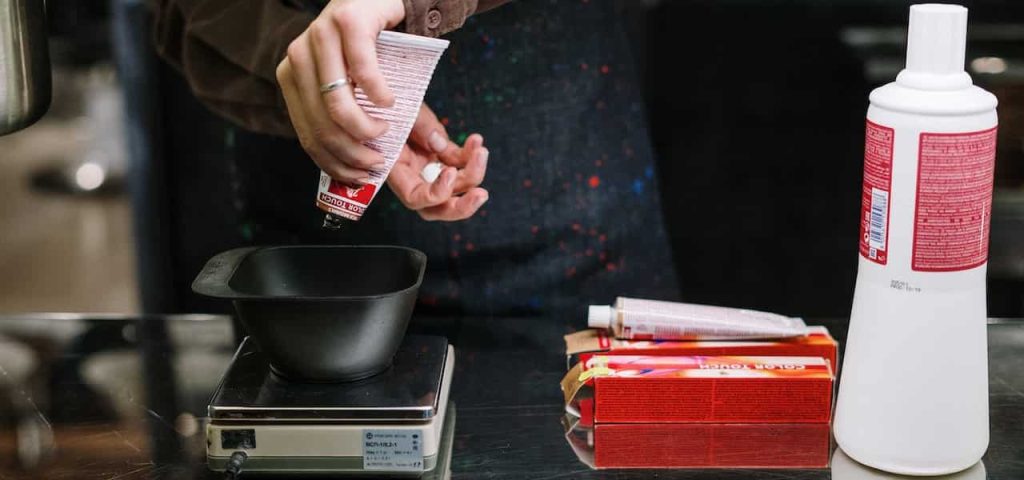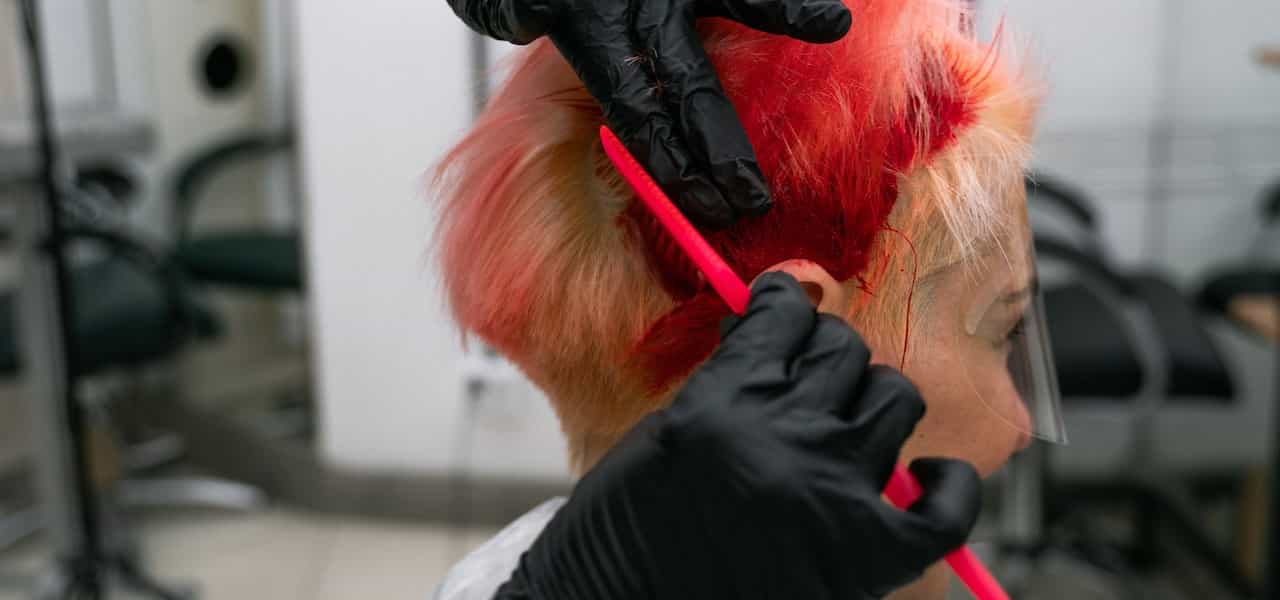Here is your complete guide to how long to wait to wash hair before coloring.
Introduction to How Long to Wait to Wash Hair Before Coloring
How long to wait to wash hair before coloring? Having luscious, vibrant hair color is a top priority for many people. Whether you’re looking to cover grays, change up your look, or express your personality, hair coloring can be a fun and exciting process. However, one common question that arises is how long to wait to wash your hair before coloring. In this comprehensive guide, we will delve into the intricacies of this topic and provide you with valuable insights on how to achieve the best results for your hair color. So, let’s dive in! So what you need to know about how long to wait to wash hair before coloring. Here is your complete guide to how long to wait to wash hair before coloring.
Understanding Hair Coloring Process
Before we delve into the waiting time, it’s crucial to understand how hair coloring works. Hair color products, such as permanent, semi-permanent, or demi-permanent dyes, use a combination of chemicals to penetrate the hair shaft and alter the color. Factors such as hair type, texture, and porosity can affect how well the color is absorbed. Prepping the hair before coloring is vital as it helps to remove any buildup, ensures even color application, and enhances color absorption.

Why Wait to Wash Hair Before Coloring? How Long to Wait to Wash Hair Before Coloring?
You might be tempted to wash your hair right before coloring to ensure a clean canvas, but it’s essential to resist this urge. Waiting to wash your hair before coloring is crucial as it allows the natural oils on your scalp and hair to act as a protective barrier. These oils help to safeguard your scalp from potential irritation caused by the chemicals in hair color products. Additionally, the oils also help to coat the hair shaft, allowing for better color absorption and more even results. Washing your hair too soon can strip away these oils, resulting in uneven color and a less desirable outcome.
Factors to Consider for Waiting Time
The waiting time before washing your hair before coloring can vary depending on several factors. The type of hair color product you’re using is a crucial consideration. Permanent hair color typically requires a longer waiting time, usually 24 to 48 hours, to allow the color to fully develop and set. Semi-permanent hair color usually requires a shorter waiting time, around 24 hours, as it doesn’t penetrate the hair shaft as deeply. Demi-permanent hair color falls somewhere in between, typically requiring a waiting time of 24 to 48 hours.
It’s essential to carefully read and follow the manufacturer’s instructions and recommendations for the specific hair color product you’re using. Each product may have its unique waiting time, and deviating from these instructions may result in less satisfactory results. The desired color outcome and the condition of your hair also play a role in determining the waiting time. If you have previously colored your hair, you may need to wait longer to ensure the color fully develops and blends seamlessly with the existing color.
General Guidelines for Waiting Time
While the waiting time can vary depending on various factors, some general guidelines can help you determine how long to wait to wash your hair before coloring. For permanent hair color, it’s typically recommended to wait at least 24 to 48 hours after application before washing your hair. For semi-permanent hair color, waiting 24 hours is usually sufficient. Demi-permanent hair color typically requires a waiting time of 24 to 48 hours, as mentioned earlier.
It’s crucial to keep in mind that these are general guidelines and may vary depending on the specific hair color product and instructions. It’s always best to follow the manufacturer’s recommendations and consult with a professional stylist for personalized advice based on your hair type, color, and desired outcome.
Here’s a table outlining some common types of hair coloring:
| Type of Hair Coloring | Description | Pros | Cons |
|---|---|---|---|
| Permanent Hair Color | Provides long-lasting results and covers gray hair completely. | Offers full coverage and can be customized to achieve desired color. | Requires regular touch-ups as new hair growth occurs. Can cause damage to hair due to the use of chemicals. |
| Semi-Permanent Hair Color | Deposits color onto the hair without altering the natural color, gradually fades over time. | Does not require strong chemicals, gentle on the hair. Can be used to enhance natural hair color or add temporary highlights. | Fades relatively quickly and may not cover gray hair completely. May require frequent re-application to maintain desired color. |
| Demi-Permanent Hair Color | Blends natural hair color with the desired color, fades gradually over time. | Less damaging than permanent color, provides more coverage than semi-permanent color. Can be used to darken or lighten hair without drastic changes. | May not provide complete gray coverage. Requires regular touch-ups as new hair growth occurs. |
| Temporary Hair Color | Provides temporary color that can be washed out easily. Can be in the form of sprays, gels, or chalks. | Allows for fun and temporary color changes without commitment. Does not require chemicals or long-term commitment. | Fades quickly and may transfer onto clothing or other surfaces. May not provide intense color or coverage. |
| Highlights/Lowlights | Adds lighter (highlights) or darker (lowlights) strands to create dimension and contrast in the hair. Can be done using various techniques such as foils, balayage, or ombre. | Adds depth and dimension to the hair. Can create a natural or dramatic effect depending on the technique used. | Requires maintenance to touch-up as new hair growth occurs. Can be expensive depending on the salon and technique used. |
Additional Tips and Precautions of How Long to Wait to Wash Hair Before Coloring
To achieve the best results when waiting to wash your hair before coloring, here are some additional tips and precautions to keep in mind:
- Perform a patch test: Before coloring your hair, it’s essential to perform a patch test to ensure that you’re not allergic to the hair color product. Apply a small amount of the product behind your ear or on a small section of your scalp and wait for 24 hours to check for any adverse reactions.
- Avoid using styling products: Prior to coloring your hair, it’s best to avoid using any styling products, such as gels, mousse, or hairspray, as they can create a barrier on your hair and inhibit color absorption.
- Protect your scalp: When applying hair color, make sure to protect your scalp with a barrier cream or petroleum jelly to prevent any potential irritation from the chemicals.
- Follow the instructions carefully: Always read and follow the instructions provided by the hair color product manufacturer carefully. Overexposure or leaving the color on for too long can result in damage to your hair and scalp.
- Use lukewarm water for washing: When it’s finally time to wash your hair after the waiting period, use lukewarm water instead of hot water, as hot water can strip away the color and cause it to fade more quickly.
- Use color-safe shampoo and conditioner: After coloring your hair, it’s important to use color-safe shampoo and conditioner to maintain the vibrancy and longevity of your color. Avoid harsh shampoos that contain sulfates, as they can strip away the color.
True or False about How Long to Wait to Wash Hair Before Coloring
You can dye your hair whether it’s clean or dirty
True. You can technically dye your hair whether it’s clean or dirty. However, as mentioned earlier, it’s generally recommended to avoid washing your hair immediately before a hair color appointment to allow natural oils to build up on your scalp and hair, which can provide a protective barrier during the coloring process. It’s important to follow the specific instructions provided by the hair color product manufacturer or your stylist for best results.
True or False: Hair color matters
True. Hair color matters when it comes to choosing the right hair color product and achieving desired results. Factors such as your natural hair color, the desired end result, and the condition of your hair can all affect the outcome of your hair coloring process. It’s important to consider factors like skin tone, eye color, and personal style when selecting a hair color to ensure it complements your overall appearance.
True or False: It’s best to skip a wash or two prior to bleaching
True. It’s generally recommended to avoid washing your hair for at least one or two days prior to bleaching. This allows the natural oils on your scalp and hair to build up, providing a protective barrier during the bleaching process. However, it’s important to follow the specific instructions provided by the hair bleaching product manufacturer or your stylist for best results.
Read More About Powerlifting Weight Classes for Women: Everything You Need to Know.
True or False: It’s best to show up to your appointment with wet hair
False. It’s generally not recommended to show up to a hair color appointment with wet hair, unless specifically instructed by your stylist. Wet hair can affect the application process and dilute the hair color, resulting in uneven or less vibrant results. It’s best to follow the specific instructions given by your stylist or the hair color product manufacturer on whether your hair should be wet or dry during the appointment.
FAQs About How Long to Wait to Wash Hair Before Coloring
Is it OK to wash hair one day before coloring?
Yes, it is generally recommended to wash your hair one day before coloring. This allows your natural oils to build up on your scalp and hair, which can provide a protective barrier during the coloring process. However, it’s important to follow the specific instructions provided by the hair color product manufacturer, as some products may have different recommendations.
Read More About The Surprising Benefits of Sleeping on the Floor.
Should you wash your hair before a hair color appointment?
In most cases, it’s best to avoid washing your hair right before a hair color appointment. As mentioned earlier, the natural oils on your scalp and hair can provide a barrier that helps protect your scalp from potential irritation caused by the chemicals in the hair color. Additionally, washing your hair right before the appointment can make it more difficult for the color to adhere properly to the hair strands, potentially affecting the final result. It’s recommended to follow the specific instructions given by your stylist or the hair color product manufacturer on when and how to wash your hair prior to a hair color appointment.
Read More About Home Remedies to Remove Acrylic Nails.
Conclusion
In conclusion, waiting to wash your hair before coloring is an essential step in achieving the best results. The waiting time can vary depending on factors such as the type of hair color product, the condition of your hair, and the desired outcome. Following the manufacturer’s instructions, performing a patch test, and taking necessary precautions can help you achieve a successful hair coloring experience. By keeping these tips in mind, you can enjoy vibrant, long-lasting hair color that enhances your style and confidence. Happy coloring!

